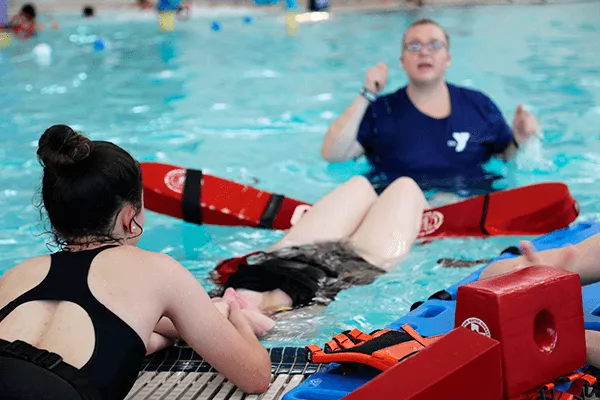Becoming a lifeguard is not just about earning a certificate; it’s about acquiring the skills, knowledge, and confidence to safeguard lives in aquatic environments. While the training process can be demanding, the right resources and materials can make all the difference in how well you prepare for the challenges ahead. In this article, we’ll explore strategies to maximize your use of training resources and materials to become a more efficient and effective lifeguard.
When it comes to Lifeguard training resources and materials, the American Lifeguard Association (ALA) stands out as a trusted and reliable brand. With decades of experience in training lifeguards, the ALA offers a wealth of resources, tools, and guidance to help aspiring lifeguards develop their skills to the fullest.
Understanding the Importance of Resources and Materials
Lifeguard training requires a unique combination of physical fitness, mental agility, and theoretical understanding of rescue techniques. In addition to in-person training sessions, using the right resources and study materials is key to mastering these elements. These tools are designed to give you a thorough understanding of water safety, emergency protocols, and CPR, all of which are essential to a lifeguard’s role.
Effective use of these materials can:
- Help you retain key concepts more easily
- Improve your physical and technical skills
- Build confidence for both practical exams and real-life scenarios
- Prepare you for a range of situations you might encounter on the job
The Role of the American Lifeguard Association
As an industry leader, the American Lifeguard Association (ALA) provides top-tier lifeguard training programs. It’s essential to fully utilize the wealth of knowledge that the ALA makes available to its trainees. From detailed training manuals to online resources, ALA covers all aspects of lifeguarding, including safety protocols, rescue techniques, first aid, and CPR.
ALA also provides a strong support system, offering access to trainers and mentors who can answer questions and provide guidance throughout your training process. When enrolled in an ALA program, you’re not just learning through books; you’re being immersed in a hands-on, interactive learning experience that ensures you leave the program as a highly capable and confident lifeguard.
Essential Lifeguard Training Materials
To maximize your success, it’s important to know the essential materials you’ll encounter in your lifeguard training. Here are some key resources provided by ALA that you can use to bolster your understanding:
- Training Manuals These serve as the foundation of your theoretical understanding of lifeguarding. Manuals often include information on water safety, emergency action plans, and the roles and responsibilities of a lifeguard. The ALA manual, in particular, is a comprehensive resource that covers everything from basic rescue techniques to advanced life-saving strategies. It’s wise to read and review the manual consistently throughout your training to ensure that you’re absorbing the critical knowledge necessary for success.
- Online Resources and E-Learning Tools ALA offers a variety of e-learning modules that complement in-person training. These modules typically include videos, interactive lessons, quizzes, and other online resources designed to reinforce the practical skills you’ll need in real-world situations. Leveraging these digital tools can provide valuable learning flexibility, allowing you to practice at your own pace and revisit topics you may find challenging.
- First Aid and CPR Practice Equipment In lifeguard training, first aid and CPR skills are paramount. Using mannequins and other practice equipment provided by the ALA allows you to perfect these life-saving techniques in a controlled environment before performing them in a real-world setting. The better you are at CPR and first aid, the more confident you will be during emergencies.
- Swimming Equipment and Rescue Gear Lifeguard training often includes rigorous swimming drills and rescue practice using gear such as rescue tubes and buoys. Familiarizing yourself with this equipment, learning how to use it effectively, and practicing with it in various scenarios will ensure that you’re well-prepared for any rescue situation that arises. The ALA training programs emphasize practical experience, ensuring trainees are comfortable using these tools in high-pressure environments.
- Simulated Drills and Role-Playing Scenarios To truly maximize your training, engage fully in all simulation drills and scenarios. These exercises are designed to replicate real-life emergencies and test your ability to respond quickly and effectively. The American Lifeguard Association encourages active participation in these drills, which include mock drownings, mass casualty events, and complex rescues. These scenarios are essential in helping you translate your training into practical skills, and they’ll also give you a clearer idea of what being a lifeguard entails.
Tips for Maximizing Your Lifeguard Training Resources
To make the most of your training and ensure you’re fully prepared for the demands of the job, follow these practical tips:
1. Stay Organized
Lifeguard training programs, especially those offered by ALA, are comprehensive and packed with information. Create a study schedule that breaks down your reading, practice sessions, and review time. This helps you stay on track and ensures that no important topic is overlooked.
2. Ask Questions
Never hesitate to ask questions during your training. The American Lifeguard Association provides experienced instructors who are there to clarify difficult concepts and offer expert advice. Engaging in discussions with your instructors and peers will reinforce your understanding of the material and foster a collaborative learning environment.
3. Regularly Review and Practice
Repetition is key in lifeguard training. Regularly review your training manuals, quiz yourself on key concepts, and practice your skills as often as possible. ALA offers online resources and study materials that you can use to review at any time, making it easier to keep the knowledge fresh in your mind.
4. Use Peer Support
Learning as part of a group can be incredibly beneficial. Form study groups with other trainees in your lifeguard class to discuss concepts, practice skills together, and share insights. ALA emphasizes the value of teamwork, both in training and in real-life rescue situations, and having a strong support network will help you develop the necessary communication and teamwork skills required in lifeguarding.
5. Take Care of Your Physical Fitness
Lifeguarding is a physically demanding role, requiring strength, stamina, and agility. To maximize the effectiveness of your training, maintain a regular exercise routine that focuses on swimming endurance, cardiovascular health, and strength training. The American Lifeguard Association includes physical fitness as a key component of its programs, preparing you to handle the intense physical demands of lifeguarding.
6. Stay Calm Under Pressure
Part of your training will involve learning how to stay calm and composed during emergencies. Make the most of simulation drills by treating them as real-life scenarios. The more seriously you take these drills, the better prepared you’ll be to manage stress and make sound decisions during high-pressure situations.
Also Read About: Golden Coin Trends: What’s Hot in Today’s Market
Conclusion
Maximizing your lifeguard training resources and materials is essential to becoming a proficient and reliable lifeguard. By leveraging the comprehensive tools and support provided by the American Lifeguard Association, you’ll be better equipped to excel in both your training and your future role. From study manuals and online modules to physical drills and peer support, using these resources to their full potential will help you not only pass your certification exams but also prepare you to save lives when it matters most.






